Nieves
Benjamin Sommerhalder
Nieves is an independent publishing house based in Zurich that focuses on artist books and ‘zines. The imprint operates a small bookshop in a shared arts-space called ‘Perla Mode’, a name adopted from the previous tenant. The space is slated for renovation in a year and has been rented to artists until construction begins. The ephemeral quality of the physical environment seems to be matched by Nieves’ own production.
Eds: You have contributed a highly personal and intuitive selection of books to the FOI Reading Room, and this seems to extend to your choice of artists to publish. Can you describe how you make your selections and who are some of the artists you work with?
Nieves: There is an instinct or initial idea that guides the selection: it has to feel right to me and have a certain balance to it. It must feel natural and genuine. Some of the artists we continually work with are Ari Marcopoulos, Geoff McFetridge, Kim Gordon (Sonic Youth), Yukari Miyagi and Stefan Marx, to name just a few. In the selection for the Reading Room you’ll find Nieves contributors such as Takashi Homma, Aaron Rose or Nakako Hayashi. The latter two also have their own publishing initiatives.
Eds: When publishing such projects who is your audience?
Nieves: The audience has built up over the years. I realised it’s a very distinctive and demanding audience who is looking for very particular things but still loves to be surprised, that thrives on new images and concepts.
Eds: Was the decision to publish rather than design and edit magazines a conscious transition?
Nieves: I think it was. It came about partly because it took so much money and time to publish the magazines Zoo and 100 (by Lex Trüb). Each issue would take a year or so of work – I wanted to publish more than that but couldn’t afford to with the magazine because of the high printing costs. When the ‘zine series started, these thoughts were in the background. I just loved the concept of doing a fast booklet with one artist each, giving them total freedom in the content.
Eds: Since you started Nieves have your goals – or even your volume of production – changed?
Nieves: When Nieves started in 2004 there were three ‘zines a month; in 2005 there were three ‘zines every season in addition to the first offset books. Now the volume of books is probably on a par with the photocopied ‘zines. The goal is still the same, to remain true to ourselves, to keep on publishing what we love.
Eds: Can you describe your methods of production?
Nieves: Nieves works very spontaneously. We do not have an annual production schedule. While we have projects lined up over the next year we are still very flexible and able to respond quickly to the artists’ practices. The downside of this is that we are not able to do a preview catalogue for the season as it could change very quickly. But this speed of production makes it more exciting and surprising for the audience. Whether it’s photocopied ‘zines or offset books, the production times are quite short.
Eds: Are there specific ‘zines which have been influential to you?
Nieves: Yes! There’s a ‘zine by Chris Johanson I bought at Tower Records in Tokyo, though it lay around on my shelf for quite a while before it became the piece that inspired me to start the Nieves ‘zine series. That’s when the activities at Nieves really started.
Eds: As well as publishing and distribution you also operate an exhibition space and have done a number of installations in association with galleries, bookstores and art fairs. How do these different spaces, and your current temporary space, inform what you do?
Nieves: They’re very important, but not as much in the way the exhibitions are set up in them, as in the effect the space has on me. I need to be intrigued by it, in a way. This also depends greatly on the people and the ideas they fill the space with.
Eds: Do you consider yourself a curator as well as a publisher?
Nieves: I’m definitely not a curator. Publisher suits me much better.
-
-
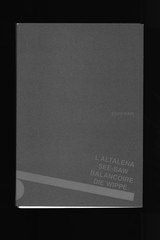
-
Enzo Mari, See-Saw
Corraini Editore, ISBN 888794223-4, 1961
www.corraini.com
-
-
-
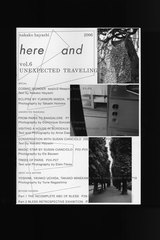
-
Here and There Vol.6: Unexpected Travelling Issue by Nakako Hayashi
Nieves, designed by Kazunari Hattori and Mina Tabei, ISBN 3-905714-12-4, 2006
www.nieves.ch
-
-
-
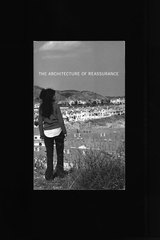
-
Mike Mills, The Architecture of Reassurance
Alleged Press, 1999
www.allegedpress.com
-
-
-
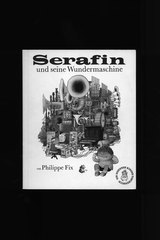
-
Philippe Fix, Serafin
ISBN 3-257-25046-0, 1970
www.diogenes.ch
-
-
-

-
Takashi Homma, Hyper Ballad
Switch Books, designed by Mike Mills, ISBN 4-916017-85-4, 1997
www.switch-pub.co.jp
-
-
-
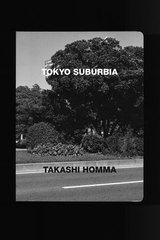
-
Takashi Homma, Tokyo Suburbia
edited by Naoya Sasaki and Kyoko Wada, art directed by Takuya Onuki, designed by Yasukazu Arai, Korinsha Press, ISBN 4-7713-0344-4, 1998
-
-
-
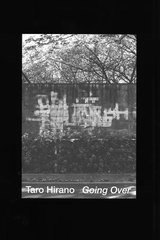
-
Taro Hirano, Going Over
Nieves, 2007
www.nieves.ch
-
-
-
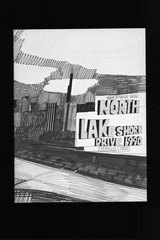
-
Wesley Willis, North Lake Shore Drive
Nieves, ISBN 978-3-905714-29-6, 2007
www.nieves.ch
-
-
-
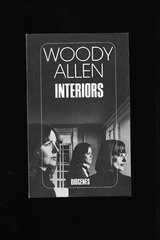
-
Woody Allen, Interiors
Diogenes, ISBN 3-257-20823-5, 1981
www.diogenes.ch
-